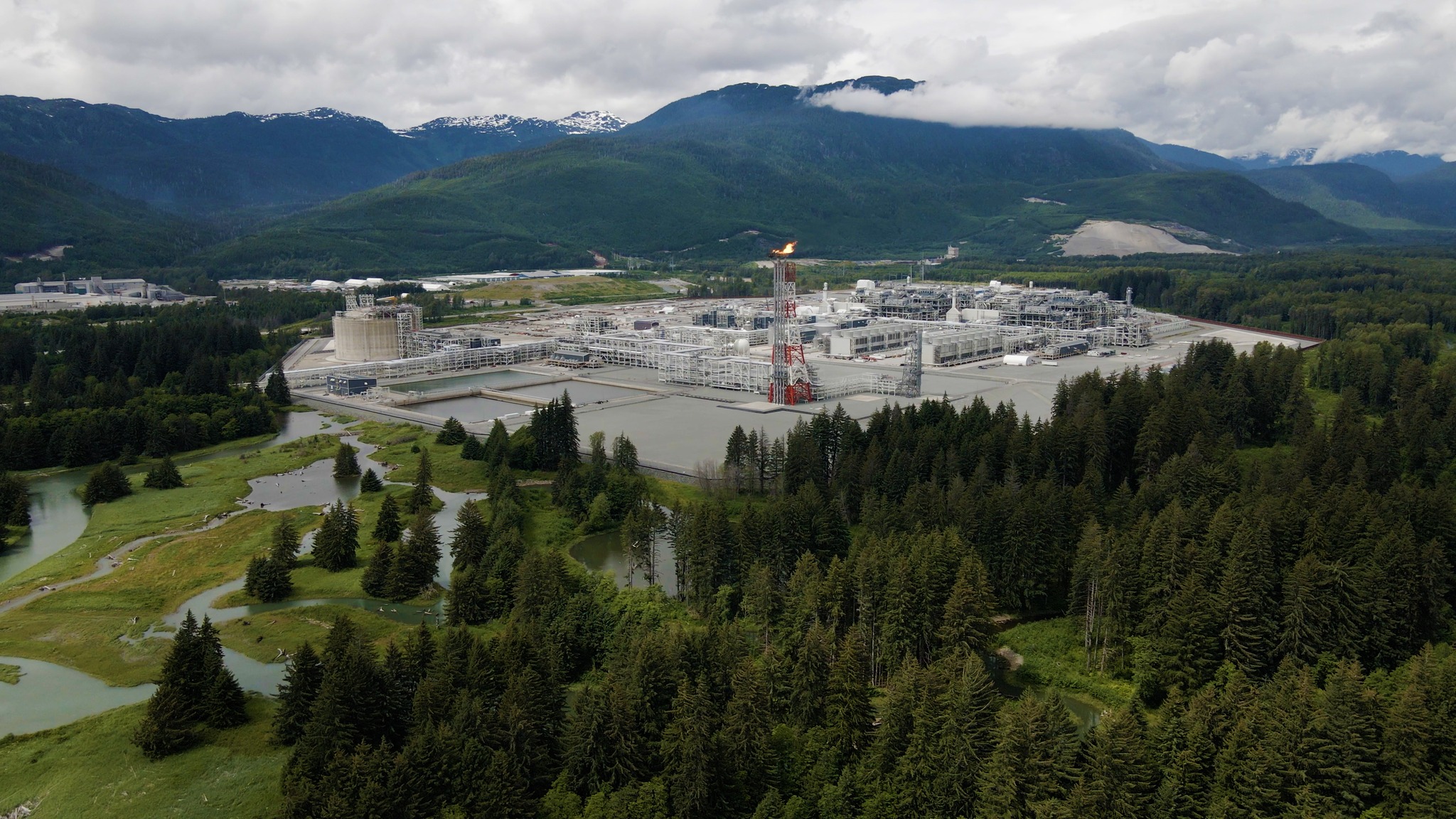This story requires a subscription
This includes a single user license.
LNG Canada filed an application with the Canada Energy Regulator (CER) on August 6 for a “minor variation” of its GL-330 licence authorizing the export of natural gas, in the form of LNG, for a period of 40 years.
Under the current license, the JV is authorized to export a maximum quantity of natural gas of 38.056 109 cbm annually, in any 12-month period, and 1,494 109 cbm for the term.
The JV applied to the regulator to “vary the annual component only of the approved maximum quantity” to permit the export of 40.485 109 cbm annually, in any 12-month period, and 1,494 109 cbm for the term.
In June, LNG giant Shell and its partners shipped the first cargo produced at the LNG Canada facility in Kitimat, on the west coast of Canada.
LNG Canada is a joint venture between Shell, Petronas, PetroChina, Mitsubishi Corporation, and KOogas
It is Canada’s first large LNG export facility.
One of the largest private investments in Canadian history, the plant will initially produce 14 million tonnes per annum (mtpa) LNG for export via two trains.
With a planned Phase 2, which includes two new trains, the capacity will rise to 14 mtpa.
Variance
LNG Canada said the requested variance represents an approximately 6.4 percent increase to the maximum annual quantity allowed to be exported under GL-330, but the variance does not require any change to the term component of the approved maximum quantity of natural gas that can be exported by LNG Canada.
The JV requested that this application be considered and granted on an
“expedited basis to ensure that a decision on the requested relief is received in time to allow the JVPs to factor the outcome of the application into their final investment decision (FID) for the Phase 2 of the LNG Canada project.”
LNG Canada noted that the first phase of the project, consisting of Train 1 and Train 2, is presently undergoing commissioning and startup activities.
LNG Canada said Train 2 is expected to be brought into operation within approximately six months.
Train 1 and Train 2 are each estimated to have a potential maximum annual operating capacity of approximately 10.05 109 m3 per train, meaning Phase 1 of the LNG Canada project is expected to have a total maximum annual operating capacity of up to 20.1 109 cbm.
Phase 2, consisting of Train 3 and Train 4, is currently in the “project maturation stage, which is the precursor to the FID.”
Train 3 and Train 4 are each estimated to have a maximum annual operating capacity of approximately 10.2 109 cbm, such that Phase 2 would add a cumulative 20.4 109 cbm to the annual capacity.
In the event of a positive FID, Phase 2 is currently projected to come into service in the early 2030s, according to LNG Canada.
Study
“When LNG Canada applied for the annual export volumes permitted in GL-330, it did so based upon the estimated technical production limits of the facility as designed, based on its best understanding of the information available at the time,” the JV said.
The approved maximum annual quantity and approved maximum term quantity sought and approved in GL-330 were “based on and aligned with those anticipated production limits of the facility.”
“However, it was always understood that the accuracy of such estimates would be improved upon as procurement, fabrication, and construction progressed, and the expected feed gas composition was refined with additional representative gas sampling data collection,” the JV said.
In December 2021, some time after the granting of GL-330 and the amending order, a detailed technical study was conducted for LNG Canada.
The technical study was undertaken to reassess, update, and improve LNG Canada’s understanding of estimated production potential from the LNG facility
LNG Canada said the technical study was extensively reviewed by the LNG Canada engineering, procurement and construction contractor to determine whether the ancillary equipment, piping, and valves installed for Phase 1 of the LNG facility could support increased annual production levels.
“Ultimately, the technical study concluded that the production capacity of each train could be up to ~6.4 percent greater than was estimated when LNG Canada obtained GL-330, which represents a meaningful opportunity to improve the project economics for both Phase 1 and, should it achieve FID, Phase 2 of the LNG Canada Project,” the JV said.
Phase 2 delays
At the time GL-330 was granted, it was expected that completion of construction of Trains 3
and 4 would follow closely on the heels of completion of Trains 1 and 2, with the trains successively entering service in approximately 6-month intervals, such that the LNG Canada project would ramp up to full capacity within 18 months of initial start-up, LNG Canada noted.
However, in the event of a positive FID, the earliest Phase 2 is currently expected to come into service is in the early 2030’s; between six – seven years after Phase 1.
Since the increased annual volume sought in the requested variance is based on the operation of Trains 1 – 4 at full capacity, corresponding annual exports at such levels will not be achievable unless and until Trains 3 and 4 enter service, the JV said.
As a result, the total export volumes from the LNG Canada project will be less than half of the moderately increased maximum annual quantity for the first several years of the GL-330 term, it said.
In aggregate, this reduced production capacity during the initial several years of the LNG Canada project operation (i.e., until Trains 3 and 4 enter service) will offset the ~6.4 percent annual volume increase now sought by the requested variance based on revised estimates of the achievable Phases 1 and 2 production capacities, LNG Canada said.

